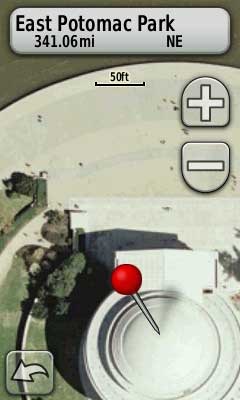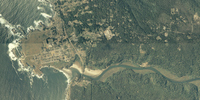 There are a lot of new map makers out there now that Garmin has opened the door to custom maps on their latest generation handhelds.
There are a lot of new map makers out there now that Garmin has opened the door to custom maps on their latest generation handhelds.
And the results are cool. Just don’t expect those people standing around the Jefferson Memorial to be in the same place when you visit!
The process for adding aerial photos and topo maps is simple enough, once you find the imagery. To get you up and running faster, I’ve posted a list of sources for aerial imagery and various types of maps below. But first, let’s look at some of the acronyms and terms you’re bound to come across as you delve into this…
 A decade ago, B.G. (before GPS, at least for me), I lived in a part of the Southern Appalachians surrounded by National Forests. I loved exploring the area by mountain bike, and while I wasn’t yet into GPS, my love of maps was already deeply ingrained.
A decade ago, B.G. (before GPS, at least for me), I lived in a part of the Southern Appalachians surrounded by National Forests. I loved exploring the area by mountain bike, and while I wasn’t yet into GPS, my love of maps was already deeply ingrained. 

 There is a wealth of
There is a wealth of 